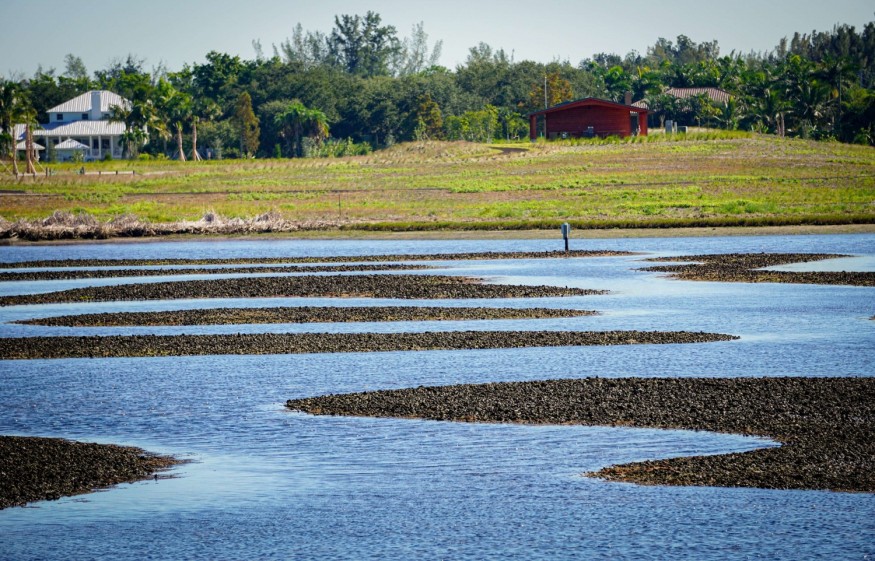
Oysters are one of the most delicious bivalves around and most importantly, they are the unsung heroes of the Gulf of Mexico as they play a vital role in protecting the ocean and the shorelines. They have a tremendous economic contribution to five US states Texas, Louisiana, Alabama, Florida, and Mississippi.
However, fishermen in Texas are concerned that they will soon lose their jobs as oyster reefs gradually disappear in the state. As NPR reported, 25 out of 27 harvesting areas in Texas are already closed in hopes of saving the industry and livelihoods of people. The oyster season normally begins from Nov. 1 through April 30, but many areas have already been closed since mid-December.
Oyster reefs at low tide | Robinson Preserve | Photographer: Joe Whalen
Disappearing Oyster Reefs Affects Livelihood and Economy
According to the NOAA fisheries, the Gulf Coast produces 45% of the $250 million oyster industry in the US. In Texas, the oyster industry contributes around $50 million to the state economy.
Alex Guttierrez, who owns boats used to harvest oysters and has been an oyster fisherman for 35 years, said he usually hires around 15 men to do the work each season. However, the disappearance of oyster reefs has limited his sources and now he can't even afford his boat's annual maintenance.
The Texas Parks & Wildlife Department decides when to close oyster reefs for harvesting using a traffic light system that has been in place since 2015. One of their criteria for closing the reefs is when biologists come back with too small or few oysters.
ALSO READ : Microbes Thriving in Eastern Oysters Scrutinized to Study Its Impact to the Molluscs' Health
Why Are Oyster Reefs Being Closed?
Oyster reefs are closed down because oysters have a hard time recovering on their own from both natural and man-made disasters. An estimated 50% to 85% of the original oyster reefs have disappeared due to hurricanes, floods, droughts, and oil spill, Nature Conservancy reported.
For instance, Hurricane Ike in 2008 significantly devastated Galveston and destroyed not only homes but also more than 6,000 acres of oyster habitat.
According to Jennifer Pollack from the Harte Research Institute, these disturbances knock oyster reefs back and continuation of harvesting would probably keep them at lower abundance levels and may never climb back out as they are a little bit less resilient. Experts believe that the worsening climate change will only exacerbate these conditions. Texas Parks & Wildlife are studying the permanent closure of three bays beyond the temporary closures.
Oyster Reefs Prevent Shoreline Erosion
As NPR reported, closing the harvesting areas are necessary to give oyster the chance to repopulate. Oyster reefs serve as protection by preventing shoreline erosion and filtering the water. However, they cannot escape poor conditions like fish. Without oysters, the quality of the marine ecosystem will suffer and juvenile fish and crabs will lose refuge from predators.
The Nature Conservancy is working to restore the underwater oyster colony, Half Moon Reef, located in Matagorda Bay, one of the most productive fisheries in Texas. However, at present, the area has little to no fossilized oyster shells left.
The organization has previously constructed new oyster beds and restored existing reefs in upper and lower Texas. However, their next goal is to restore the Half Moon Reef.
RELATED ARTICLE : Oysters Developed Debilitating Tissue Abnormalities Due to Deepwater Horizon Oil Spill in 2010
Check out more news and information on Oysters in Science Times.
© 2025 ScienceTimes.com All rights reserved. Do not reproduce without permission. The window to the world of Science Times.










